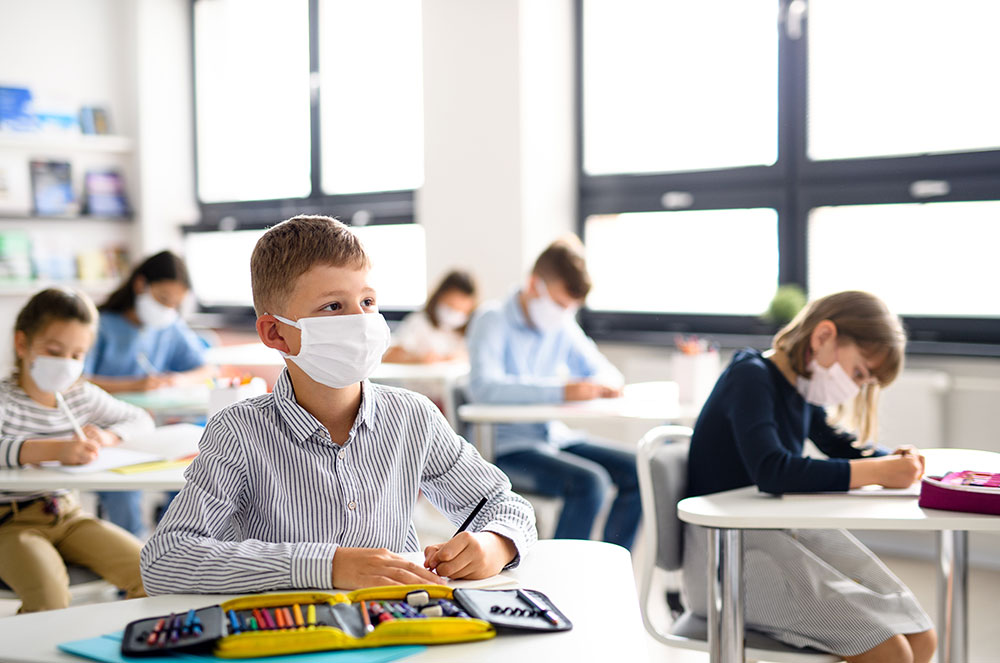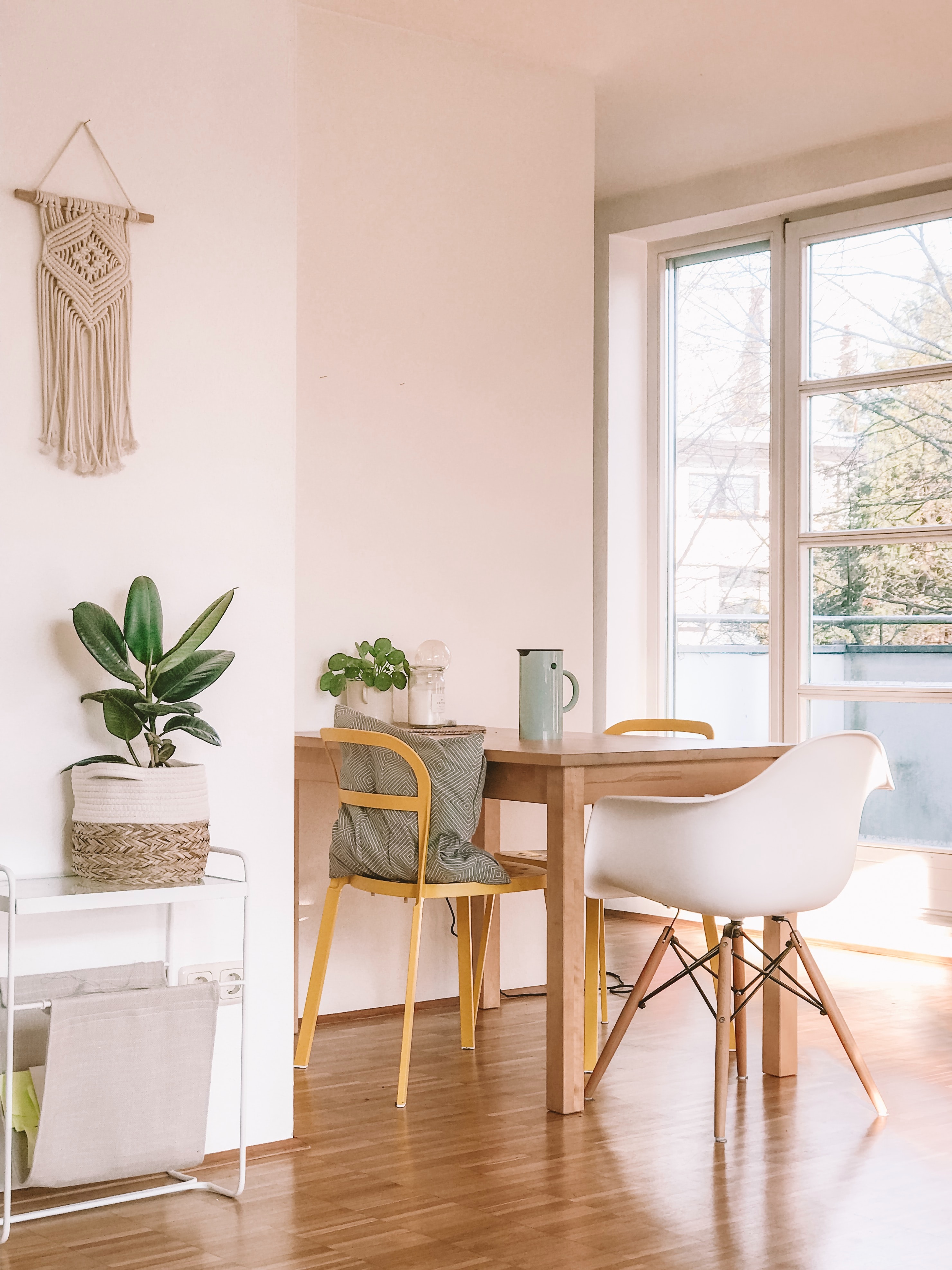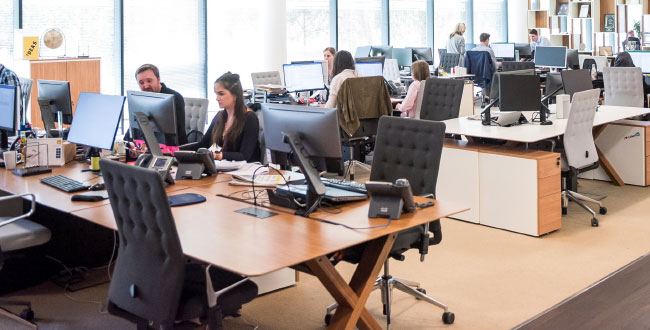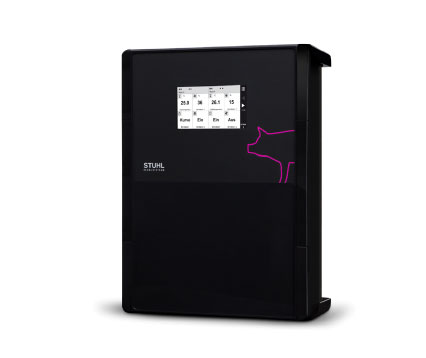VIRUS LOAD AND CO2 REDUCTION THROUGH AUTOMATIC VENTILATION OF CLASSROOMS
Air quality during lessons has been an important issue not only since Corona. Modern ventilation technology provides a remedy by continuously monitoring the air quality.
OPTIMAL AIR QUALITY IN CLASSROOMS
Automatic control of ventilation systems with CO2 sensor
Poor and stale air in classrooms is a problem. The ability to concentrate decreases, headaches, mood disorders and fatigue occur and the efficiency of teaching suffers.
In addition, recent studies conclude that poor air quality promotes the spread of viruses, germs and bacteria.
Frequent ventilation as a solution also has its disadvantages. Students near the windows may quickly become hypothermic, and emissions such as noise and dust enter the classroom. Heating efficiency also suffers.

What the CO2 content tells us
Indoor CO2 concentration is a key indicator of air quality.
The Committee on Indoor Guideline Values states a room air concentration of up to 1,000 ppm (parts per million) CO2 as harmless. In reality, the concentration already decreases noticeably from 800 ppm. By way of comparison, the current level of CO2 in the atmosphere – including fresh air – is around 400 ppm on average.
Up to now, the actual indoor air concentration has been recorded at best on a random basis – and before the start of the Corona pandemic, often not at all. Measurements by the accident insurance fund NRW1) in 380 classrooms showed concentrations of over 2,000 ppm in some cases – according to the classification, this is considered hygienically unacceptable. This is primarily because viruses in particular can spread optimally in such a room climate.
Sensor control of ventilation systems
With a CO2 sensor in the control circuit of the ventilation system, this condition is a thing of the past. The installation is inexpensive and can be carried out quickly, the costs are minimal.
By controlling ventilation systems according to demand, various advantages can be realized. For example, energy savings through optimal operation of the equipment, a constant high quality of breathing air and uniform air distribution without excessive temperature fluctuations.
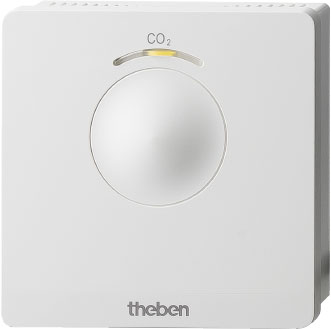

Conclusion
Continuous recording of air quality with a CO2 sensor integrated into the control loop ensures optimum plant utilization, improved air quality and thus a better learning climate.
Thanks to simple and cost-effective installation, the retrofitting of such sensors can be realized without great effort.
STUHL CLIMATE CONTROLLER SCC
WITH CO2 SENSOR
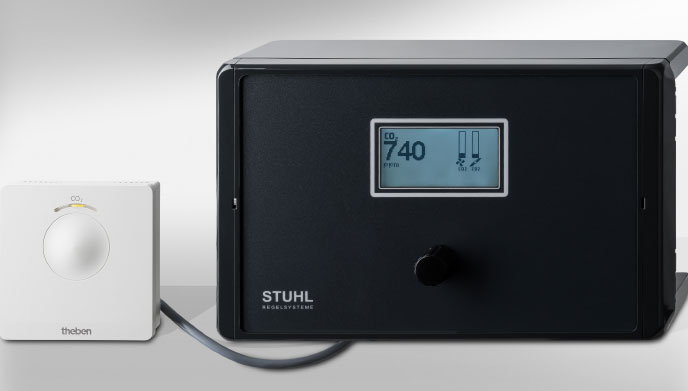
With the SCC-CO2 controller you provide the necessary fresh air supply in classrooms and offices as well as in lecture halls and event rooms.

